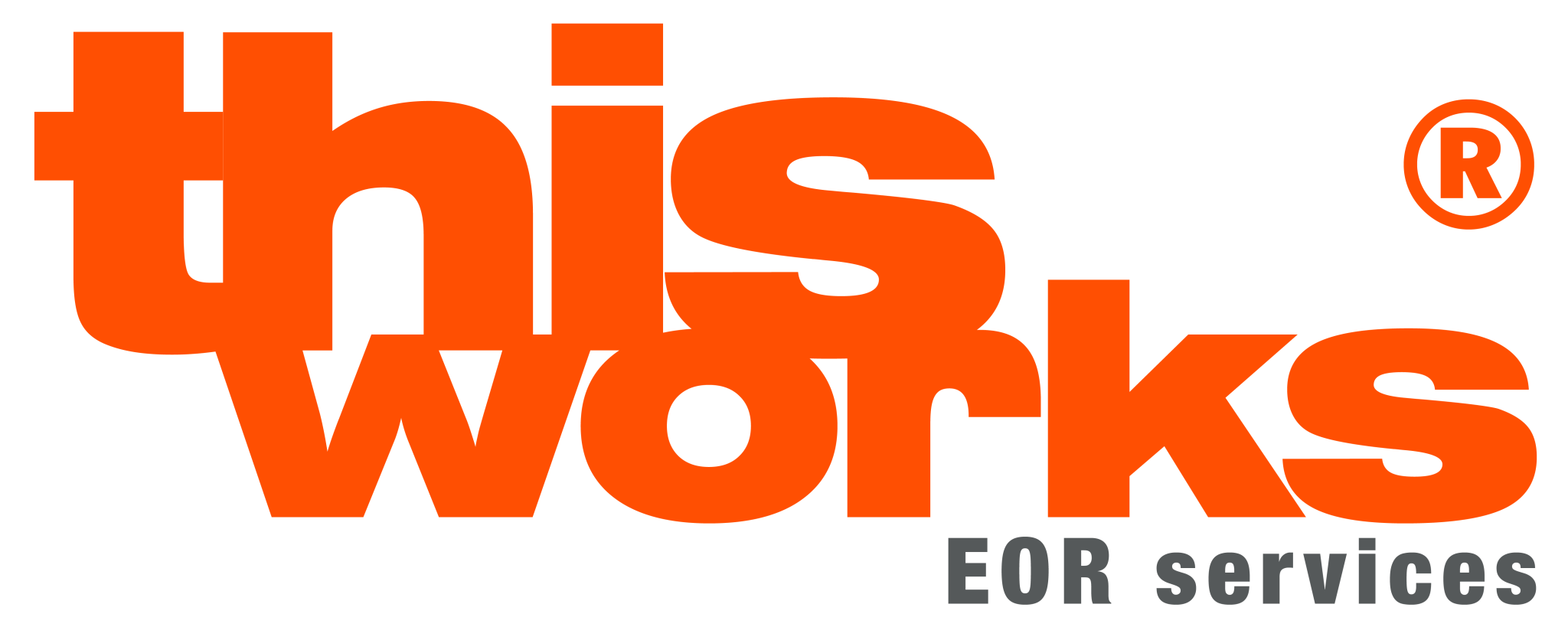
2025 Workplace Trends: Empathy & Flexibility Shaping The Future
The work environment is undergoing rapid transformation through two key trends: empathy and flexibility. The contemporary business world of 2025 demonstrates these traits in increasing numbers because businesses have fundamentally changed their operational and success methods. The Future of Workplace Flexibility is not just about remote work; it’s about creating adaptable policies prioritizing employee wellbeing, productivity, and inclusivity.
As organizations adapt to these shifts, the emphasis on the Future of Workplace Flexibility and the impact of workplace empathy becomes crucial. These trends constitute a fundamental business evolution and a strategic requirement for success in today’s competitive global marketplace. Organizations that successfully implement these aspects create new achievement standards by establishing workplaces that engage and satisfy their employees while maximizing their productivity.
The rise of empathy in workplace culture
To develop empathy, one requires a deeper understanding than traditional acts of kindness provide. Managers should actively embrace empathy to effectively understand team members’ emotions when building work environments that value each person. Managers need interpersonal understanding to execute better decision-making processes.
Implementation in companies
More organizations currently understand empathy’s vital role in leadership positions. Training programs focused on emotional intelligence are becoming more common, helping leaders integrate the impact of workplace empathy into every aspect of their management style. The cultural shift goes beyond improving workplace ambience by substantially affecting organizational performance and workforce contentment.
Benefits of empathetic leadership
- The understanding and appreciation employees receive lead to increased dedication toward the company. Employees demonstrate better dedication to their work while enhancing their commitment to company objectives.
- Improved productivity results from workplaces promoting empathy because they experience reduced work stress and conflict. The supportive workplace environment helps employees concentrate better on their work while producing elevated quality results that improve productivity and decrease employee burnout.
Future of workplace flexibility
The workplace environment is undergoing rapid transformation as employees increasingly adopt flexible work arrangements such as remote work and hybrid schedules. The fast work transformation results from evolving employee needs and business requirements to adjust to modern times. Today’s workforce demands superior personal life equilibrium more than ever. As of 2025, studies indicate that many businesses have embraced these flexible working models. About 74% of companies now operate under a hybrid work model, reflecting a broad adoption across various industries. Remote Work Trends for 2025 show a growing shift toward hybrid models and flexible schedules.
Tools and technologies
Technology is driving Remote Work Trends for 2025, making virtual collaboration easier. To support Remote Work Trends for 2025, UK companies are leveraging various digital tools. The combination of Microsoft Teams and Slack alongside secure cloud services serves as core tools for enabling effective communication while sustaining team cohesion across all physical locations.
Technological advancements have become the foundation of the evolving flexible work paradigm. Such technologies enable workforce mobility across locations and enhance project management efficiency by maintaining team connection while preventing workflow interruptions. Technological innovations have transformed flexibility into a permanent workplace solution.
The link between workplace policies and employee wellbeing
As workplaces evolve, employee wellbeing in modern workplaces has become a critical priority. Organizations recognize that productivity and long-term success depend on workplace policies for mental health that actively support employees’ psychological and emotional needs.
Organizations establishing formal mental health policies achieve better employee satisfaction, reduced absenteeism, and higher staff retention. A Deloitte study from 2023 reveals UK employers spend around £56 billion yearly because of poor mental health, thus demonstrating the necessity for extensive workplace wellbeing programs.
How mental health policies are shaping employee wellbeing in modern workplaces
The organizations which make mental health and wellbeing their strategic focus will lead the market through their modern operational policies in 2025. These include:
- Flexible work arrangements that enable employees to do their work from home or through hybrid office schedules help reduce their commuting-related stress and rigid workplace constraints.
- Companies now give their staff mental health leave as a dedicated benefit to remove the stigma around rest.
- Through Employee Assistance Programs (EAPs), organizations provide confidential counselling along with mental health resources so their workers can manage workplace stress.
- Employers give employees monetary allowances to join gyms and use mindfulness apps and therapy sessions for mental health benefits.
Companies implementing workplace policies
Leading businesses are now taking the front position to support mental health policies across their organizations.
- Lloyds Banking Group established a comprehensive mental health strategy through which employees receive unlimited mental health support, counselling, and wellness materials 24 hours a day. Managers in the company receive specified training to detect burnout and additional signs of stress.
- Employees at Unilever receive a comprehensive wellness program through which they can select flexible working arrangements and participate in mental health first aid training and scheduled mindfulness programs.
- PwC launched “Be Well Work Well,” which teaches staff members how to establish professional boundaries, use mental health services, and prioritize work and personal time.
The future of work is not just about productivity—it’s about people. Companies that integrate mental health policies with flexible work models will foster a resilient, motivated, and mentally healthy workforce in 2025 and beyond.
Strategies to reduce burnout in the evolving work environment
The modern workplace faces an increasing burnout challenge because remote and hybrid work arrangements have become more prevalent. Flexibility benefits work environments, but its implementation creates boundaries between work and personal life, resulting in longer workday hours, digital information overload and elevated stress levels. Organizations must implement strategies to reduce burnout and maintain a healthy and productive workforce while ensuring employees experience the benefits of flexible work arrangements rather than suffer from downsides.
- Multiple studies show that remote employees work 2-3 additional hours daily when there are no established office hours for them to refer to. Statistical research indicates remote working leads employees to extend their workday by 2-3 hours above traditional office settings.
- People experience excessive stress because they depend too much on digital communication through emails, video calls, and messaging apps, which causes continual disruption and diminished downtime. Workers must answer immediately, which leads to their exhaustion.
- When professional boundaries blend with personal life, employees struggle to disconnect, which causes their mental fatigue to worsen.
Boundaries, workload management, and leadership support
Businesses that wish to fight burnout need to create official policies supporting employee boundaries and workload balance while providing senior-level support systems. The most effective approaches to combat burnout consist of the following:
- Companies need to create specific working time frames through “right to disconnect” policies, which promote employee disconnect after their designated work hours. Some businesses operating in the United Kingdom implement specific email curfews to stop employees from working outside their scheduled hours.
- Regular breaks during workdays through the Pomodoro method, where workers focus intensely for set intervals and then rest briefly, enhance productivity and decrease stress levels.
- Organizations today use asynchronous communication to let staff respond at their convenience instead of requiring attendance at every virtual meeting.
- Business leaders need proper training to detect burnout symptoms, distribute equitable workloads, and offer mental health support to their team members.
For flexibility to be truly beneficial, however, it must come with structured policies that support work-life balance rather than increase the risk of overwork. Organizations that adopt proactive burnout prevention strategies will create healthier, happier, and more resilient workplaces in 2025 and beyond.
Creating an inclusive and adaptive workplace culture
Understanding how to improve workplace culture is essential for companies aiming to foster collaboration, innovation, and employee satisfaction in an evolving work environment. Companies across the United Kingdom understand that workplace success depends on embracing diversity while providing inclusive work environments and adaptable policies. An influential company culture now goes beyond perks because it boosts morale for all teammates regardless of their personal characteristics or work flexibility. Organizations prioritizing fostering an inclusive work environment and improving workplace culture will be better positioned to attract and retain top talent in 2025 and beyond.
The importance of diversity and inclusion
A truly inclusive work environment must align with the future of workplace flexibility, ensuring all employees have equal opportunities to succeed regardless of location or background. It demands that systems incorporate inclusivity from the beginning. Remote and hybrid work models provide employees self-governance but can produce unintentional discrimination unless organizations establish appropriate monitoring systems. Some challenges include:
- Remote workers face difficulties in their professional advancement since they miss out on vital networking chances, fail to advance in their careers, and end up disadvantaged compared to their office-based colleagues.
- Managers develop negative biases toward remote workers when their work output becomes less transparent, creating inaccurate perceptions of their work engagement.
- Staff members who face disabilities and employees who lack dependable home office facilities encounter obstacles when working under the remote-first framework.
- Work flexibility procedures across organizations now provide identical opportunities to all staff members anywhere throughout the country.
Leadership and HR policies for a better workplace
HR policies play a vital role in how to improve workplace culture. A genuinely inclusive and adaptive workplace culture starts with leadership. Managers and HR teams play a crucial role in shaping policies that prioritize:
- Leadership through empathy involves active employee listening and maintaining transparent communication lines.
- Flexible and transparent policies – Ensuring clear remote work expectations, career growth, and mental health support guidelines.
- To maintain employee connections, the organization should provide regular feedback sessions, direct one-on-one check-ins, and virtual town hall discussions.
- Diversity and inclusion training – Educating leaders and teams on unconscious bias, cultural competency, and inclusive communication.
Conclusion
Success in modern workplaces depends on flexibility and empathy as key elements. Organizations focusing on mental health, inclusive workplace cultures, and established policies will achieve better productivity, reduced employee burnout, and enhanced staff engagement.
Real organizational change surpasses hybrid work strategies because it needs empathetic executives who lead by example and proactive support systems. Organizations following these principles will establish motivated, resilient teams that succeed in future working environments.
FAQ
- How can a company start integrating empathy into its culture?
Organizations should start by providing instruction on empathy, which teaches leaders and staff about emotional intelligence and active listening. Workplace cultural integration of empathy values can be achieved through regular team exercises focusing on developing empathy skills.
- What strategies help maintain productivity with flexible work arrangements?
To ensure productivity with flexible work arrangements, companies should utilize project management tools and establish clear communication protocols. Setting measurable goals and offering training on time management can also help.
- What are the benefits of fostering an empathetic and flexible workplace?
A flexible workplace culture supported by empathy between employees leads to better engagement rates, reduced staff turnover, and increased job satisfaction. Such work environments experience superior team collaboration and innovative outcomes because their staff members feel supported and valued for their best performance.
- How can leaders demonstrate empathy and flexibility daily?
Active team member listening enables leaders to show care and adapt workplace rules according to staff requirements. The organization’s approach will include adaptable work hours, remote work options, and mental health support.et.
Article Author – Gino Peters
Gino Peters is the Commercial Director at ThisWorks, with a rich history of nearly a decade in international payroll. Throughout his tenure, he has consistently kept abreast of evolving labor legislation, ensuring that ThisWorks remains at the forefront of industry knowledge. Beyond his vast expertise, Gino is deeply committed to advising and guiding clients and partners with precise insights. His leadership guarantees that all content and operations at ThisWorks meet the highest standards of clarity, accuracy, and compliance.
Follow him on Linkedin
Book a free consultation with Gino Peters





